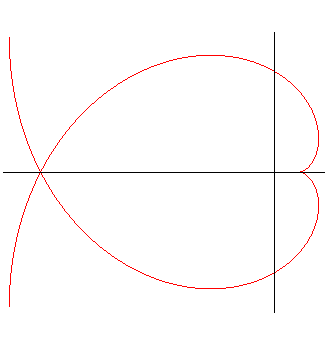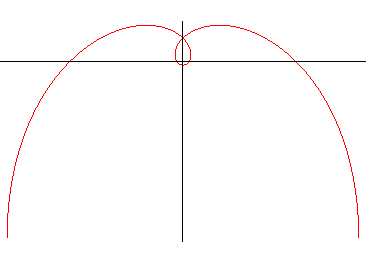| next curve | previous curve | 2D curves | 3D curves | surfaces | fractals | polyhedra |
PSEUDOCYCLOIDAL CURVE, PARACYCLOID, HYPERCYCLOID
| Curves studied by Euler in 1750 and 1783, Cesaro in 1887. |
The pseudocycloidal curves are the curves satisfying an
intrinsic equation of the type ,
by analogy with the cycloidal
curves, which satisfy:
.
In other words, they are the curves for which, when they roll without slipping
on a line, the centre of curvature describes a hyperbola an axis of which
is parallel to the line (see Mannheim
curve).
There are two cases, depending on the sign of the above constant cte.
First case, cte <0: PARACYCLOID
| Cartesian parametrization: Cartesian tangential angle: Curvilinear abscissa: Radius of curvature: Intrinsic equation 1: |
 |
Second case, cte >0: HYPERCYCLOID (be careful, the word
hypercycloid is also used instead of epicycloid)
| Cartesian parametrization: Cartesian tangential angle: Curvilinear abscissa: Radius of curvature: Intrinsic equation 1: |
 |
REMARK: the paracycloid is the negative
pedal of the spiral of the hyperbolic sine ,
and the hypercycloid is the negative pedal of the spiral of the hyperbolic
cosine
.
Furthermore, they are the evolutes
of one another.
| next curve | previous curve | 2D curves | 3D curves | surfaces | fractals | polyhedra |
© Robert FERRÉOL 2017